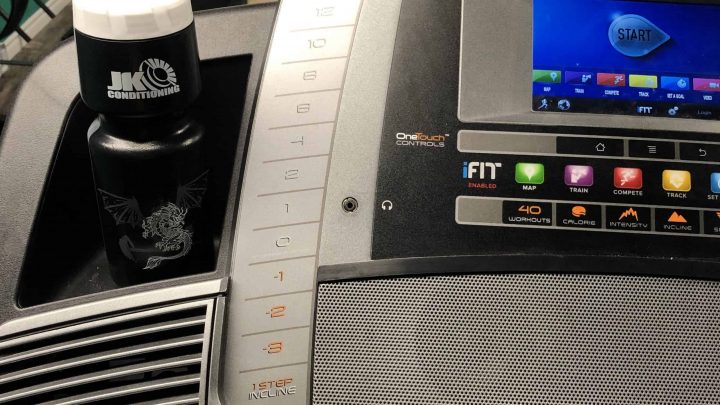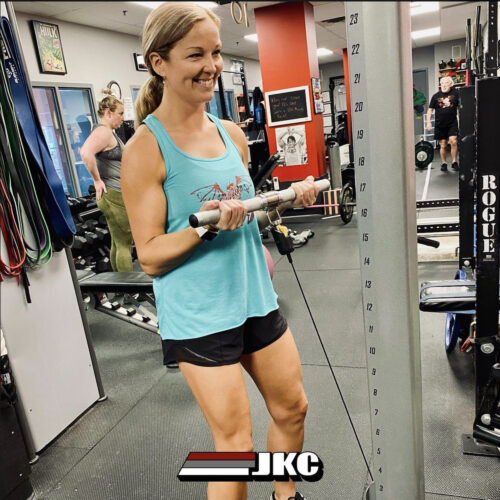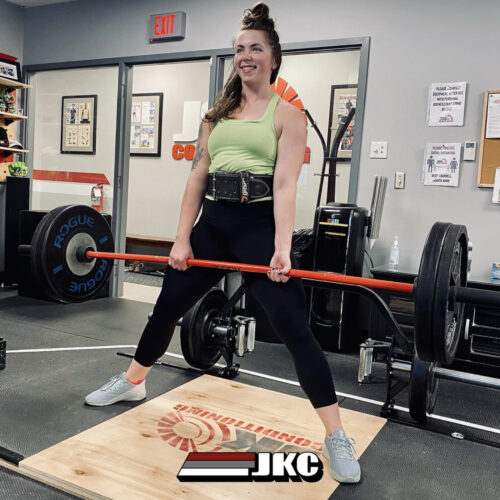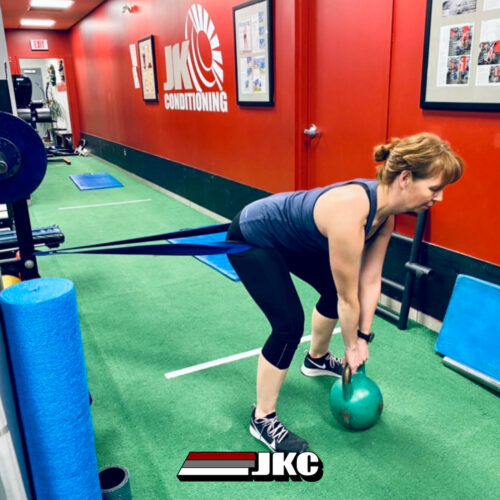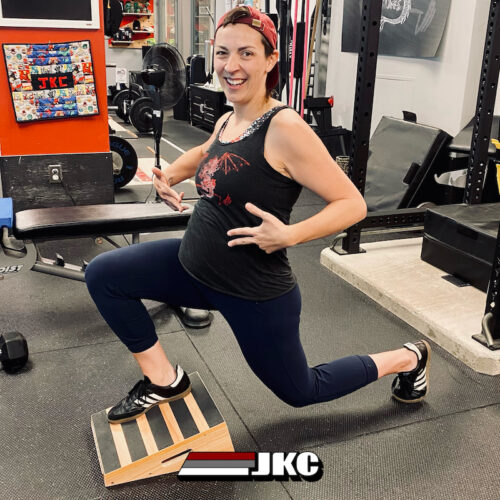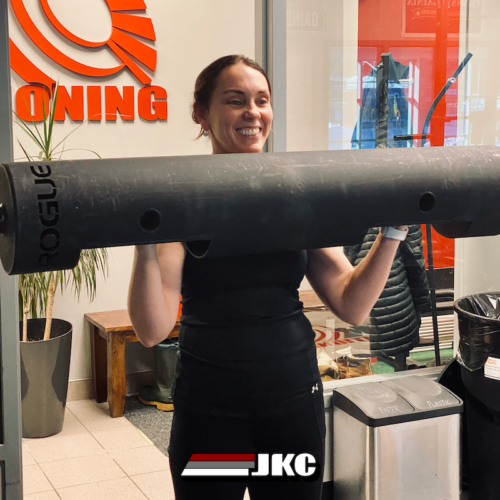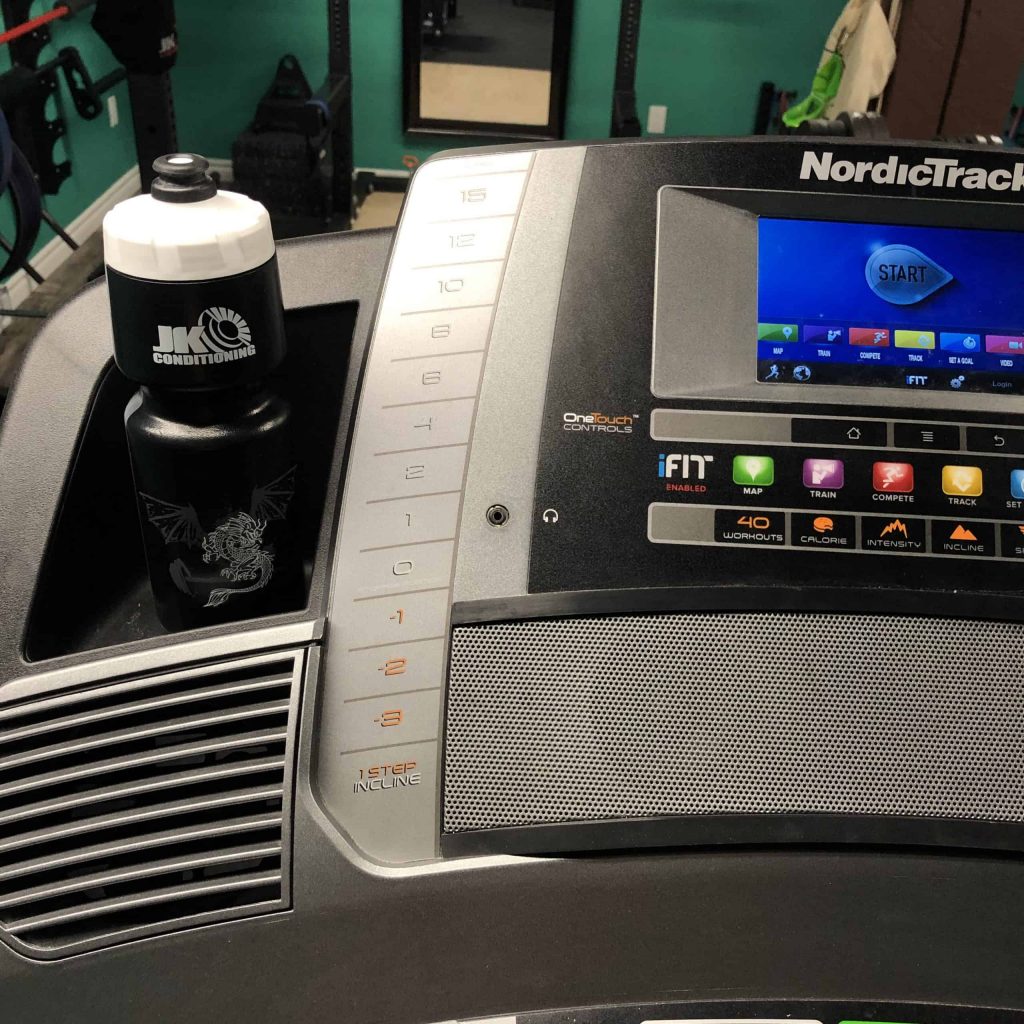
By Julia Howard, MPH, RHN, Run Coach
Have I ever told you how much I dislike the treadmill? Not ideal for a resident of windswept Newfoundland. But, now it’s treadmill season and, here we are.
Part of the reason why I run is because I get to lose myself in the beauty of a trail, the conversation with a run partner, the fluidity of an oval track, or the laser focus and challenge of racing.
With a treadmill, there is none of that. Even as a treadmill owner, I will sometimes go to another gym just to have the sights and sounds of other humans around me.
Although not a perfect substitute for running outside, the treadmill is a great tool when used appropriately.
(Note: This post considers only motorized treadmills, not self-powered treadmills such as the Assault AirRunner or the Woodway Curve).
Just Me, Myself, and My Excessively Tight Hips
The good thing is, with such focus on yourself, the treadmill can sometimes help let you know if your body is feeling okay. If your hips are too tight or something is out of whack, it’s much harder to ignore it, which many runners tend to do.
Some research has found that treadmill running limits your range of motion compared to “overground running” which may impact your running form. This finding may be related to the familiarity of the runner with treadmill running or the stiffness of the treadmill platform .
Have you ever noticed yourself running up onto the front of the treadmill? Running too close to the front of the treadmill will limit your stride length and decrease your efficiency.
In addition, research on treadmill running vs. overground running suggests that you should also set your incline to at least a 1 % grade during easy running and, as your pace gets faster, a 2 % is likely more appropriate, especially for lactate threshold work. This adjustment helps counteract the lack of air resistance on a treadmill and better simulates the feeling of running outside.
Interestingly, coach and exercise physiologist, Dr. Jack Daniels has found that it costs about 7% more energy to run outside on flat ground compared to running at the same speed on a treadmill. (Under calm conditions).
Treadmill platform stiffness is also a consideration. One possible bright side of treadmill running is that some treadmills have lower impact surfaces than roads which can provide some relief from the usual pounding on your body.
On the other hand, the stiffer the treadmill platform, the more closely the treadmill will compare to typical concrete / road running conditions. This extra platform stiffness also comes at a higher “metabolic cost” or energy required compared to a less stiff platform so, a stiffer platform can result in a higher rate of oxygen consumption and heart rate.

Physical Strategies for the Treadmill
If I start my run on a treadmill and feel particularly resistant to doing the run that day, I go through my list of what’s going on in my body. After my warmup, I take the time to do my “pre-hab” that will help me properly prepare for the rest of the run or interval session. This includes exercises like:
- glute bridges
- scapular pushups
- mountain climbers
- hurdle drills
- foam rolling mid/upper back
- ankle mobility work
- dynamic drills (e.g., high knees, leg swings, ankle bounding)
Once I feel physically ready, then there’s still the mental part… Actually getting it done.

Mental Strategies for the Treadmill
Here are a few strategies I use to get through my runs and workouts on the treadmill:
- Set the tone: Warmup with your favourite songs (i.e., Maggie Rogers’ “Burning” and Jain’s “Makeba”).
- If you have the option, open a window to let the “outside smells in”. The smell of nature can have a calming effect.
- Set some initial short-term goals, if needed. For example, promise yourself that you can step off after 15 to 20 minutes for stretching / drills / dance break (aka, the running man) and maybe even again after the next 20 to 30 minutes.
- Try wearing a lighter shoe. Your rate of perceived exertion during easy running on a treadmill may be higher compared to running outdoors, despite the extra help a treadmill provides.
- For threshold workouts, find an upbeat playlist that you’ve never heard before, like Spotify’s “Run N’ Bass” playlist. I think of this as discovery in sound versus discovery on a new trail or road route.
- For easy runs, find a podcast, audiobook, or a movie. Inspirational YouTube talks can work! Put subtitles on so you can read over the sound of the treadmill motor.
- Schedule a side by side treadmill run with a friend! It’s amazing how the time can fly with conversation and shared “suffering”.
- Put a towel or a shirt over the data screen to cover up the time.
- During steady runs, mix up the incline setting every couple of minutes and focus on form.
- If that doesn’t work (I must be having a rough day!), I crank up the speed and get the run done faster. Not always recommended! Easy runs should be easy!
“Mood Follows Action” -Rich Roll
Whatever you feel like on treadmill day, remind yourself of the quote from ultramarathoner, Rich Roll: “Mood Follows Action”. Try to accept that you may never “feel like” running on the treadmill at first but, you’ll feel damn good when you’re done!
(If you need proof, check out this fact sheet from the Canadian Psychological Association about the physical, psychological, and neurological benefits of physical activity.)
Hope that helps! Happy Treadmilling.
Thanks for reading,
~Julia
If you’re interested in run coaching to help you set that PB, get in touch!

